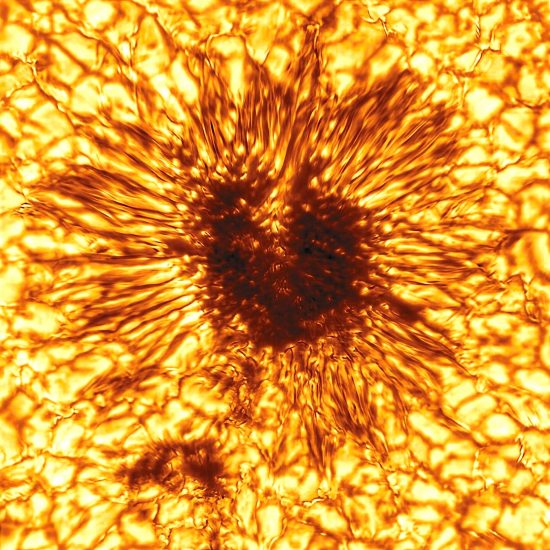
December 9, 2020
A recent press release from Rice University states: “Orbiting instrument hints at how stored magnetic energy heats solar atmosphere.”
The solar corona exceeds 2 million Kelvin. Many explanations for why this is so are offered by consensus heliophysicists, but they admit that they are not certain. Why they are not certain has to do with the foundation upon which they build theories. As written many times in these pages, the simplest theory that best fits observations is that high velocity positive ions are colliding with relatively static ions and neutral atoms in that location. The photosphere, the chromosphere and the lower corona region of the Sun’s atmosphere are dominated by an electrical double layer.
The “surface” of the Sun is the photosphere, followed by the chromosphere, and then the corona. The chromosphere is about 2000 kilometers above the photosphere and is a very thin layer compared to the Sun’s diameter of 1.4 million kilometers. Plasma density in the chromosphere is low, more than a million times less dense than Earth’s atmosphere. Temperatures vary from 6000 Celsius near the photosphere to less than 4000 Celsius in its middle regions.
One of the Sun’s great mysteries is why its temperature rises to 20,000 Celsius at the top of the chromosphere. However, the greatest mystery of all is why the corona is two million Celsius! Why does the hottest region of the Sun begin at an altitude of 4000 kilometers and then extend over a million kilometers from its surface?
In an Electric Universe, electricity flowing out of the Sun is balanced by electric charge flowing into it. Changes in temperature include changes in magnetic field polarity and electric field strength. Instead of open magnetic fields (magnetic reconnection), Electric Universe advocates propose that the Sun is connected to the galaxy by Birkeland current “transmission lines”. Therefore, its puzzling characteristics are most likely demonstrating fluctuations in electric charge arriving from the Milky Way’s generator.
The Sun is positively charged, while the negatively charged electrode is located far beyond the planetary orbits. The “virtual cathode” is known as the heliopause. Birkeland current filaments slowly move through the Solar System, supplying more or less power to an electric circuit that includes the Sun. The energy powering the Sun is focused from outside and not expelled from inside a thermonuclear core, so its inverted temperature gradient conforms to an electric discharge. The Sun is a gigantic electrical entity, not a ball of hot hydrogen gas.
Data from the now defunct Ulysses spacecraft, confirmed by the Solar Dynamic Observatory’s ultraviolet studies, revealed that the solar wind speed varies inversely with coronal temperature—a completely unexpected result, since the opposite was predicted.
Electric Universe advocate Wal Thornhill wrote:
“Clearly, in the immense volume of the heliosphere an unmeasurably small drift of electrons toward the Sun and ions away from the Sun (the solar wind) can satisfy the electrical power required to light the Sun. It is only when we get very close to the Sun that the current density becomes appreciable and plasma discharge effects become visible. The enigma of the Sun’s millions-of-degrees corona above a relatively ‘stone cold’ photosphere is immediately solved when the Sun’s power comes from the galaxy and not the center of the Sun!”
In the electric model of the Sun, its electric field is strongest in the coronal holes, since protons are accelerated away. Outside of coronal holes, where the electric field is weak, protons move more aimlessly, resulting in more collisions. That random movement equates to temperature. Therefore, the solar wind is fastest where the corona appears coolest and is slowest where it appears hottest.
Stephen Smith












